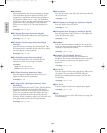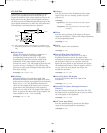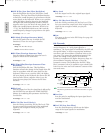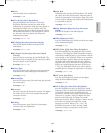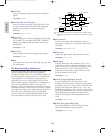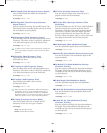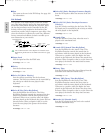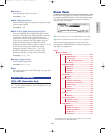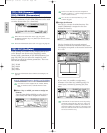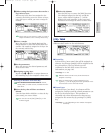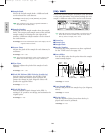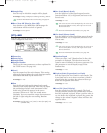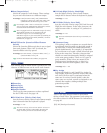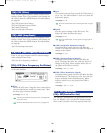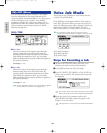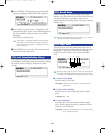
142
Voice Mode
[F1]: COM (Common)
[F6]: PARAM (Parameters)
When Drum is selected for Voice Type in the PARAM
menu, a maximum of 128 AWM Elements can be used
to create drum voices (i.e., drum kits).
When Drum is selected for Voice Type, the panel
ELEMENT SELECT keys 1-4 (EX5/7) for normal voices
become inactive.
For more information about each voice type, see page 29.
[F2]: OSC (Oscillator)
These settings are related to the samples that form a
voice. Because one drum voice (drum kit) can be
formed with a maximum of 128 AWM Elements (see
page 39), OSC lets you select the sample for each
element as well as set minute parameters. There are
four menus available.
[F5]: TUNE
[F6]: WAVE
[F7]: MIX
[F8]: ZONE
For more information about elements and samples, see
page 29.
Steps for Assigning Elements to Each Key, and for Editing
An element can be assigned in the TUNE, WAVE,
MIX, or ZONE screens, available from the OSC
menu.
1Select a key to which you want to assign an
element.
Turn the Data Dial or KNOB1 to select the key
(note name) that will be assigned an element.
In the screen that has not been assigned an
Element, hyphens (---) will be displayed and the
cursor cannot be moved.
You can also use the INC/DEC key or the
numeric keypad.
2Assign the Element
Press [F3] to execute the ADD function. The
sample (PRE:0001) is assigned as the first
element for that key.
The key location of the currently assigned
element is confirmed as indicated in the screen.
The display corresponds to the musical scale from
C–2~G8.
If you want, it is possible to assign many
elements to the same key (called layering). To
create layers, continue by pressing [F3] once
more.
A maximum of 128 elements can be layered by
repeating pressing F3 key. However, when one
key uses a number of elements, the number of
elements available for other keys decreases. The
first four elements from the lowest number will
sound at a time for a key.
C4C–2 G8
Note Range
Voice/E.qx 5/21/98 11:31 AM Page 142



